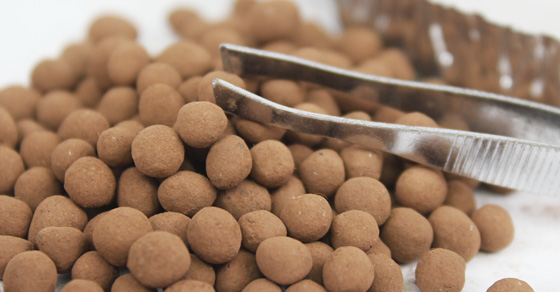As society continues to move toward more sustainable waste management methods, an alternative technique for handling EAF dust has been gaining interest: EAF dust recycling via reduction roasting.
The Problem with EAF Dust
EAF dust is a by-product of the steel production process, and refers to the dust collected during the melting of steel in an electric arc furnace. Global estimates for EAF dust production currently sit between 5 to 10 million tons annually, a staggering amount, considering the steel industry continues to experience rising demand.
EAF dust has long imposed significant waste disposal costs on the steel industry, not only because of the volume at which it is produced, but also because the dust must either be chemically or thermally treated before it can be disposed of in a landfill – a costly endeavor.
How EAF Dust Recycling Works
EAF dust may be considered a waste, but it holds valuable metals, namely zinc, that could be used as raw material for making other products. And while the metals are not usable in their current form, reduction roasting using what is commonly called Waelz kiln technology recovers and restores these metals for reuse in new production processes.
Recovering zinc and other metals from EAF dust via reduction roasting is a fairly simple process. A typical EAF dust recycling process looks like this:
The kiln feed material, comprised of zinc ‘waste,’ fluxes, and reductant (coke), is typically pelletized before addition to the kiln. First, however, EAF dust is pre-conditioned via blending with water. This helps to reduce dust during processing and also prepares the material for pellet formation on the disc pelletizer (also known as a pan granulator).
On the disc pelletizer, pellets are formed through the rotation of the disc in the presence of a binding agent (in this case water), which causes an layering effect similar to rolling a snowball. Ideal pellet size range for the EAF dust recycling process is typically around 1/6” to ¼”.
Once pellets have reached the desired size, they exit the disc pelletizer via centrifugal force and are fed to the rotary kiln. The pellets are heated to a specified temperature, where the carbon reduces the zinc oxide to metallic zinc. This metallic zinc will vaporize, and the metal vapor is then oxidized above the kiln bed to reform zinc oxide mist, which is then carried out of the kiln to the dust collection system. The material is then cooled, which is commonly carried out in an industrial cooling system such as an indirect rotary cooler, and then collected for storage or transport.
Note: It is worth mentioning that while this process vaporizes the intended metals, the process does not reach high enough temperatures to vaporize the iron content. Therefore, the remaining pellets are composed of iron and can be sold back to iron companies to be used again in the steel-making process. Furthermore, because the iron is in the form of pellets and not iron fines, steel producers are able to feed the iron pellets into their steel furnaces without any issues associated with dust.
Why Pelletize EAF Dust?
Pelletizing prior to processing in the kiln offers many benefits:
Entrainment Prevention
EAF dust is an extremely fine and dusty material. This poses a problem when processing in a kiln, because material fines become entrained in the process gas flow, ultimately exiting the kiln with the off-gases and resulting in an extremely inefficient and ineffective process. Pelletizing the fines increases the size of the material, so it cannot become entrained in the process gas.
Improved Heat Transfer Efficiency
Heat is more effectively transferred through a bed of pellets than a bed of fines. This is because fines are likely to become entrained in the hot air stream, while pellets will roll against the kiln refractory. Heat is then transferred not only from the hot air stream, but also through the kiln refractory, promoting improved heat transfer. While fines in an air stream result in a more effective heat transfer, pellets are desirable, because they stay in the kiln much longer.
Increased Process Efficiency
Pelletization of the fines also results in a more efficient operation. If dust were to be processed in the kiln, a low gas velocity would be required, due to the risk of entrainment. As mentioned, however, since pelletizing prevents entrainment, a much higher gas velocity can be used. Because of this, a much smaller kiln can be utilized.
Considerations in EAF Dust Recycling
Varying Composition: The composition of EAF dust varies considerably from source to source. For this reason, it is desirable to run agglomeration feasibility trials on the unique source of EAF dust to be processed, before pelletizing equipment is purchased. This will provide the process data necessary to produce the desired feedstock for the kiln, and will also provide the data necessary for pelletizer design.
Abrasiveness: Because it is laden with metals, EAF dust tends to be fairly abrasive. This may require special customizations to the processing equipment in order to maintain operational efficiency and prevent premature wear.
Conclusion
As landfilling EAF dust becomes increasingly costly and we look for more sustainable methods for managing resources, the process of EAF dust recycling will continue to gain traction. This process provides a more sustainable and cost-effective alternative to current disposal methods.
FEECO has been providing custom equipment and testing services for over 70 years, with our disc pelletizers having become a preferred approach for EAF dust recycling. The FEECO Innovation Center also offers batch- and pilot-scale testing for both the agglomeration and thermal aspects of EAF dust recovery.
For more information on recycling EAF dust, or custom EAF dust processing equipment, check out our EAF dust recycling project profile or contact us today!



